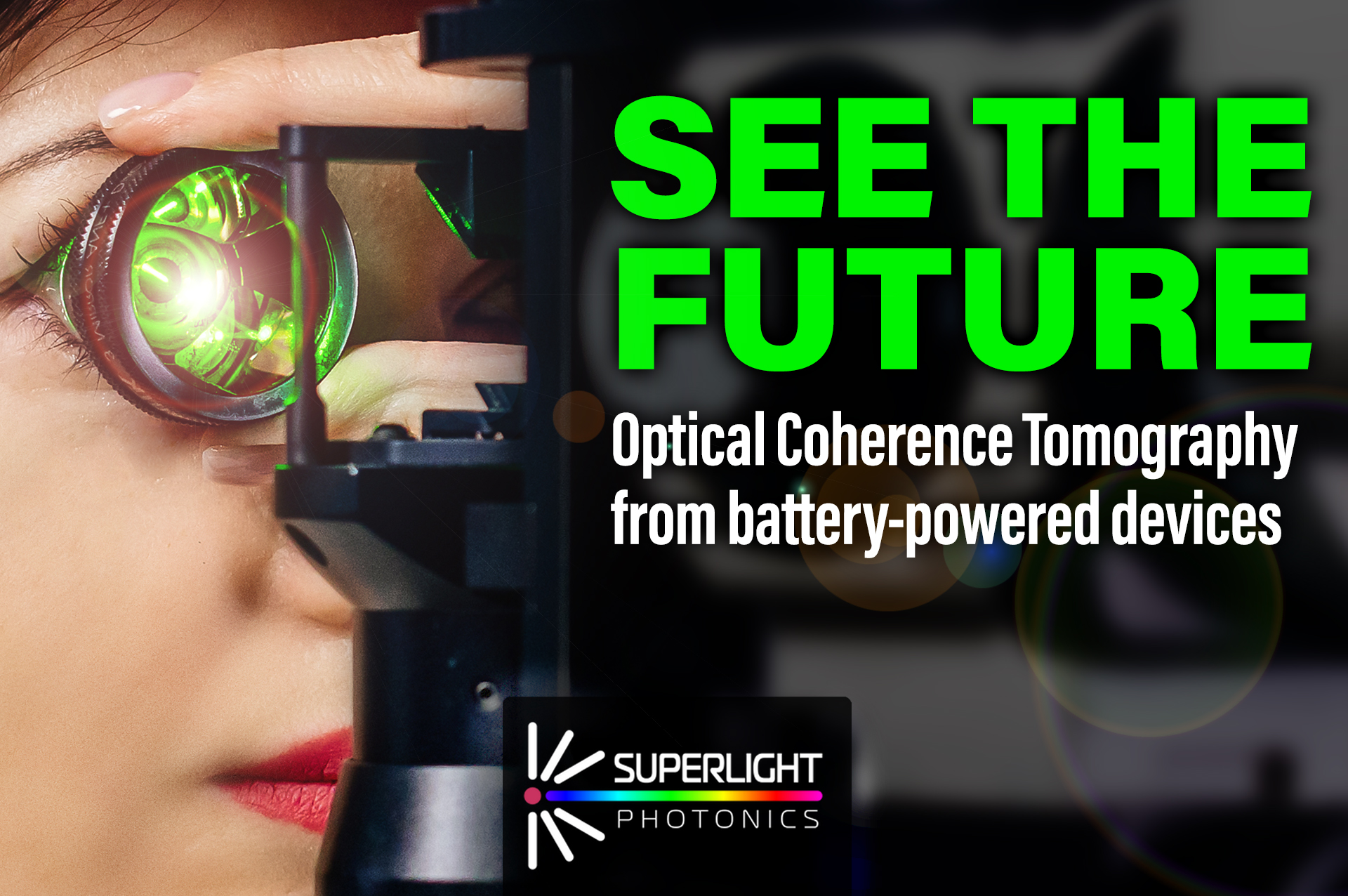Optical Coherence Tomography (OCT) is a critical technology for both medical and industrial applications, enabling precise, non-invasive analysis of materials and tissues. However, traditional OCT systems face limitations, including high noise levels, bulky form factors, and reliance on wired power.
Superlight Photonics has introduced the SLP1000 laser to address these challenges. This groundbreaking solution delivers low noise, battery operation, and a compact design, setting a new standard in OCT technology.
Understanding OCT and Its Challenges
OCT enables detailed inspection of samples, whether it’s examining tissue in a medical setting or verifying material layers in manufacturing. Traditional OCT lasers, however, come with limitations:
- High Noise Levels: Reduced resolution impacts the depth and clarity of scans.
- Bulky Setups: Large systems hinder portability and integration.
- Power Dependency: Devices require wired connections, limiting mobility in hospital and industrial environments.
Jeroen from Superlight Photonics explains:
“With conventional lasers, noise reduces the system’s ability to resolve fine details. Our solution not only improves resolution but also enhances usability.”
Superlight Photonics’ SLP1000: Key Innovations
The SLP1000 laser represents a significant leap forward in OCT technology, offering three major benefits:
- Low Noise for High Resolution
By minimising noise, the SLP1000 allows for deeper penetration and finer detail in imaging. This is particularly beneficial for detecting previously unseen phenomena in medical and industrial applications. - Battery-Powered Portability
The SLP1000 is the first wideband OCT laser to operate on battery power, enabling seamless mobility. Hospital users, for example, can roll a cart-mounted system between operating rooms without needing to reconnect to mains power. - Compact Design for Easy Integration
The laser’s smaller form factor simplifies integration into OCT systems, enhancing flexibility for developers and end users alike.
A Scalable Future with Photonic Integrated Circuits
What truly sets the SLP1000 apart is its use of photonic integrated circuits (PICs). This technology not only reduces the size of the laser but also ensures scalability for future advancements.
Jeroen highlights the potential:
“Photonic integrated circuits make our lasers more efficient and adaptable, providing a future-proof solution that traditional fibre or crystal technologies can’t match.”
Practical Applications
The SLP1000 has broad applicability across various sectors:
- Medical Imaging: From detailed tissue analysis to portable diagnostic devices, the SLP1000 enhances precision and accessibility.
- Industrial Inspection: Ensures accuracy in layer thickness measurements and defect detection.
- Research and Development: Enables deeper exploration of materials and biological samples with minimal noise interference.
How to Evaluate the SLP1000
Superlight Photonics provides accessible pathways for evaluation, offering hardware and consultation tailored to your project needs. Interested teams can:
- Contact distributors in Europe or Japan.
- Visit Superlight Photonics’ website to connect directly.
- Arrange trials to integrate the laser into their systems and run application-specific tests.
“We understand the importance of hands-on experience,” says Jeroen. “That’s why we make evaluation hardware readily available to help teams see the real impact of our technology.”
Redefining OCT with Innovation
Superlight Photonics’ SLP1000 laser is more than just a technological upgrade—it’s a redefinition of what OCT systems can achieve. With its low noise, battery-powered operation, and compact design, it paves the way for smarter, more scalable solutions.
Explore the SLP1000 today and discover how it can transform your OCT applications: https://www.superlightphotonics.com/slp-1000
You must be signed in to post a comment.

Comments
No comments yet